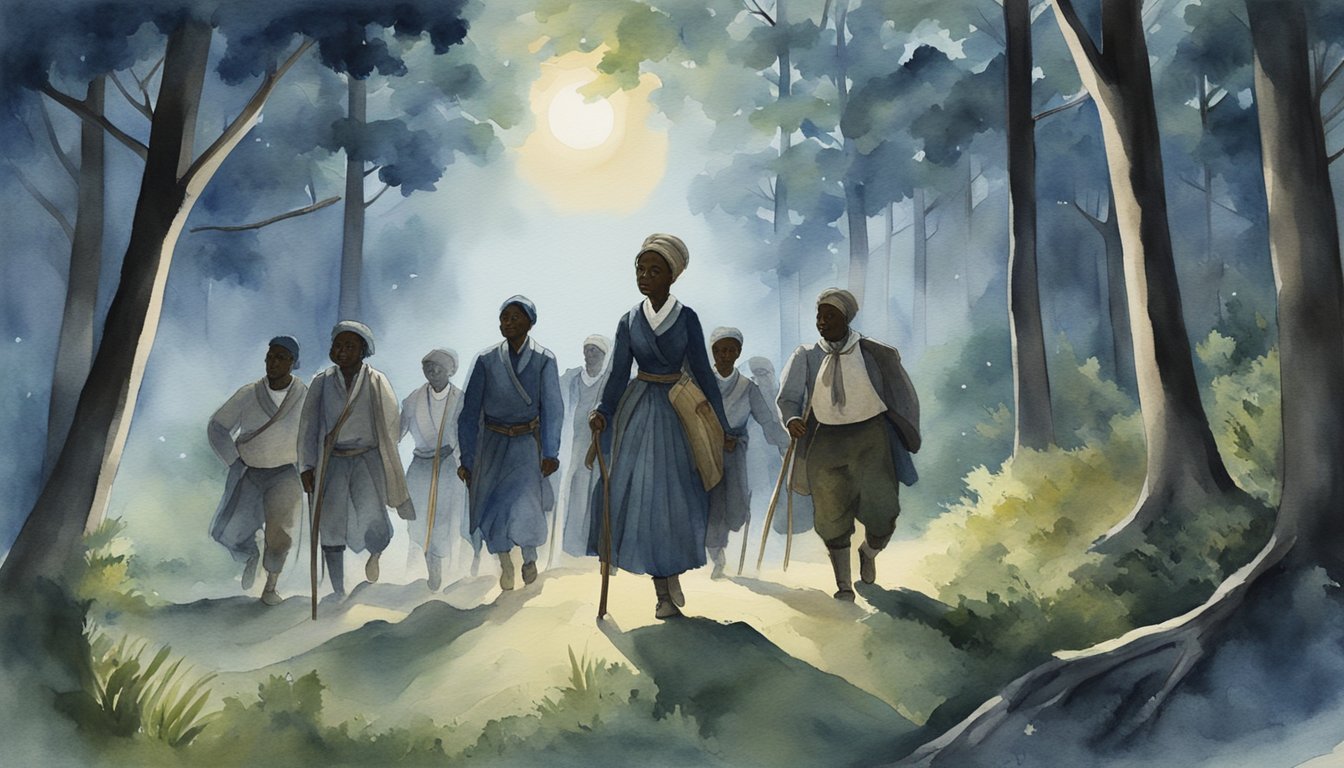Life Story of Harriet Tubman

Harriet Tubman’s life story is a testament to her resilience and bravery as she transitioned from an enslaved person to a prominent leader in the fight for freedom. Her legacy as “Moses” continues to inspire many in the quest for justice and equality in American history.
Early Years and Escape to Freedom
Born into slavery in Dorchester County, Maryland, around 1820, Harriet Tubman, originally named Araminta “Minty” Ross, experienced the brutal realities of slavery from a young age. She endured severe hardships and witnessed the plight of her family and fellow enslaved people. In her late twenties, around 1849, Tubman made a daring escape from the plantation, traveling nearly 90 miles by foot to reach Philadelphia, thereby securing her freedom.
Underground Railroad Conductor
After her escape, Tubman became deeply involved with the Underground Railroad, a covert network designed to help enslaved individuals reach safety in free states and Canada. Tubman was instrumental in planning and leading around thirteen missions, liberating approximately 70 people, including her own family. Tubman’s fearless leadership earned her the moniker “Moses of her people.”
Civil War Contributions
With the outbreak of the American Civil War, Tubman continued her fight against slavery by supporting the Union Army. She served in various capacities as a nurse, cook, and even a spy, providing crucial intelligence. Notably, her guidance helped in a raid at Combahee Ferry, which resulted in the freedom of over 700 slaves.
Later Years and Legacy
In her later years, Tubman settled in Auburn, New York, where she continued to work for African American rights and women’s suffrage. Despite her contributions, she struggled financially and was denied proper compensation for her wartime services for many years. Harriet Tubman passed away on March 10, 1913, but her actions as an abolitionist and activist solidified her standing as a principal figure in the enduring narrative of courage and freedom in the history of the United States.
Harriet Tubman’s Enduring Influence

Harriet Tubman’s legacy as an African American hero and activist is immortalized through various forms of cultural recognition and material memorials. Her role in American history is celebrated, reflecting her importance as an icon for freedom and humanitarian values. Statues, museums, and educational programs honor her contributions, ensuring that future generations recognize her bravery and dedication to justice. Her influence extends beyond history books, inspiring artists, writers, and even those outside her era, much like a Dali surrealist genius whose vision reshapes perspectives. Tubman’s enduring impact serves as a testament to resilience and the relentless pursuit of equality.
Cultural Impact and Recognition
Harriet Tubman is recognized as a central figure in the fight against slavery and an embodiment of strength within the African American community. Her image and achievements have been celebrated in songs and artworks, reflecting her status as an American hero. The announcement of Tubman’s forthcoming appearance on the $20 bill signifies a national acknowledgment of her contributions and the value placed on her legacy.
Material Heritage and Memorials
Material tributes to Tubman are prevalent across the United States, from statues to schools named in her honor. A statue in Columbus Square, Boston, stands as a testament to her enduring influence as one of the first on city property to honor a woman, and notably, a black woman who led many out of bondage. The widely disseminated photos of Tubman, including the iconic 1868 carte-de-visite, serve as a poignant reminder of her fortitude and dedication to equality and human rights. Her unwavering spirit continues to inspire activism and care within the community, solidifying her role as a central figure in the narrative of emancipation and the ongoing fight for civil rights.

